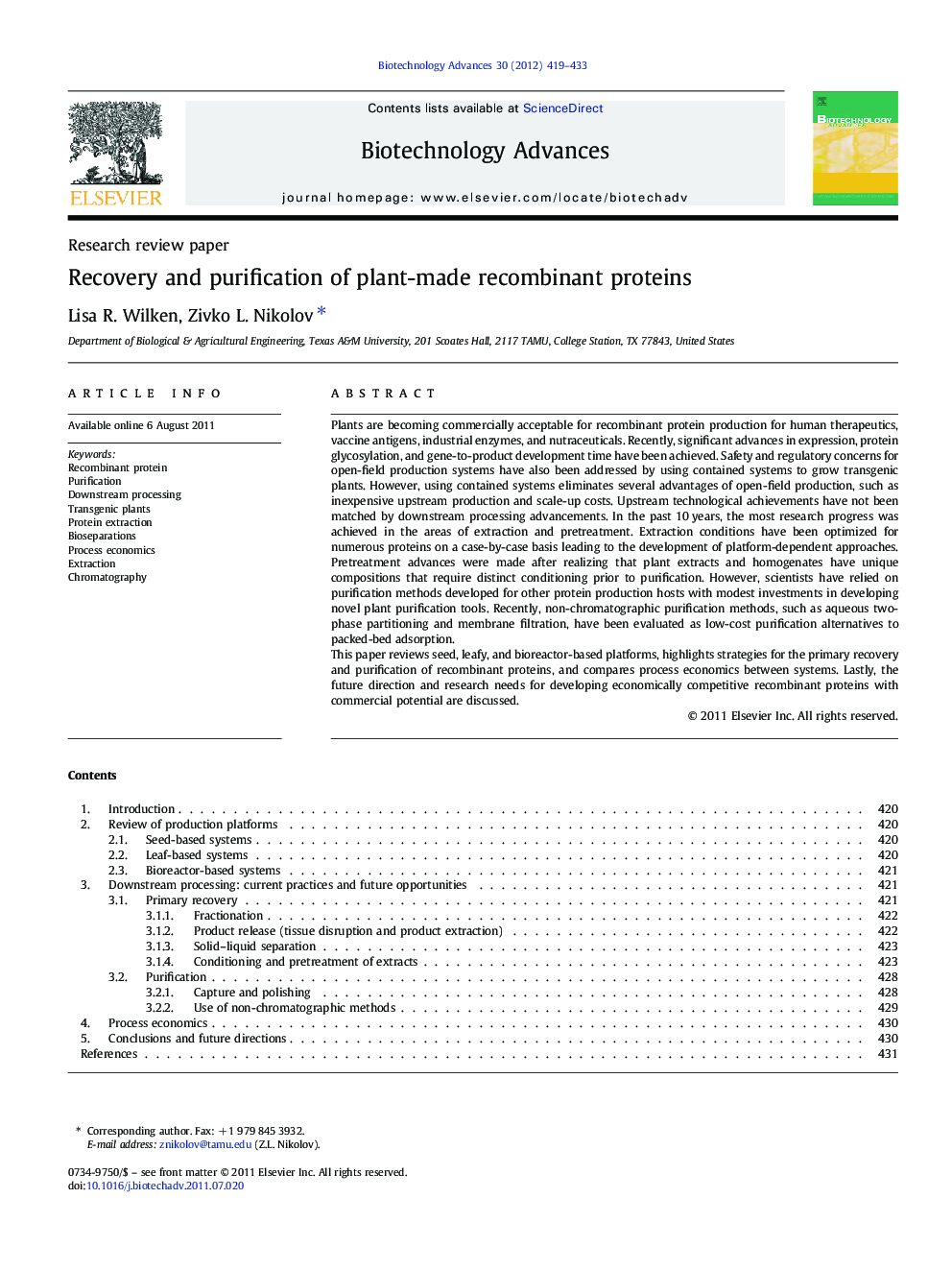| Article ID | Journal | Published Year | Pages | File Type |
|---|---|---|---|---|
| 14380 | Biotechnology Advances | 2012 | 15 Pages |
Plants are becoming commercially acceptable for recombinant protein production for human therapeutics, vaccine antigens, industrial enzymes, and nutraceuticals. Recently, significant advances in expression, protein glycosylation, and gene-to-product development time have been achieved. Safety and regulatory concerns for open-field production systems have also been addressed by using contained systems to grow transgenic plants. However, using contained systems eliminates several advantages of open-field production, such as inexpensive upstream production and scale-up costs. Upstream technological achievements have not been matched by downstream processing advancements. In the past 10 years, the most research progress was achieved in the areas of extraction and pretreatment. Extraction conditions have been optimized for numerous proteins on a case-by-case basis leading to the development of platform-dependent approaches. Pretreatment advances were made after realizing that plant extracts and homogenates have unique compositions that require distinct conditioning prior to purification. However, scientists have relied on purification methods developed for other protein production hosts with modest investments in developing novel plant purification tools. Recently, non-chromatographic purification methods, such as aqueous two-phase partitioning and membrane filtration, have been evaluated as low-cost purification alternatives to packed-bed adsorption.This paper reviews seed, leafy, and bioreactor-based platforms, highlights strategies for the primary recovery and purification of recombinant proteins, and compares process economics between systems. Lastly, the future direction and research needs for developing economically competitive recombinant proteins with commercial potential are discussed.
